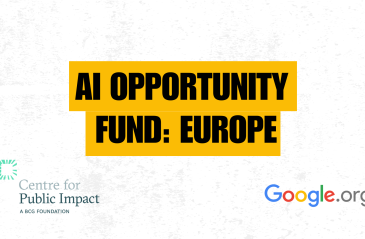
The power of storytelling in climate leadership

.@ervin_grant of @resilientPGH on the importance of #resilience and #equity in city innovation. #FutureofCities
Share article"Resilience is also, vitally, about the ways in which things are interrelated" - #Pittsburgh's @ervin_grant #FutureofCities
Share articleIn #Pittsburgh, #resilience is about identifying shocks and stressors and adjusting. @ervin_grant of @resilientPGH on the #FutureofCities
Share articleWe put our vision for government into practice through learning partner projects that align with our values and help reimagine government so that it works for everyone.
As Chief Resilience Officer, Grant Ervin oversees the integration of sustainability and resilience into City of Pittsburgh's services, programs, and policy. He has helped lead the development of a variety of programs, including Pittsburgh's inclusion in the Rockefeller Foundation's 100 Resilient Cities initiative and the creation of the Uptown Eco-Innovation District, District Energy Pittsburgh, Pittsburgh and Neighborhood Community Information System, and the Pennsylvania Community Transport initiative.
“Resilience” is one of those terms that we all understand but can struggle to define, partly because it is so broad in its reach. We asked Grant what resilience means to him: “In brief, it's your ability to define and address shocks and stressors, to see and plan for short- and longer-term challenges.”
“When you are talking about a whole city, resilience is also, vitally, about the ways in which things are interrelated. You have to see and work with connections across departments and topics. In my role I'll work on mental health resilience with psychologists, as well as infrastructure resilience. Our OnePGH strategy focuses on housing and workforce development and the relationship between the two.”
“The dividend in working on resilience is that you can bring sectors together to solve issues that cut across departments. The challenge, of course, is that we are talking about continuous and adaptive improvement - you never reach an end state. Climate change is happening, our infrastructure is aging, and new risks are constantly evolving.”
...resilience is also, vitally, about the ways in which things are interrelated. You have to see and work with connections across departments and topics.
While mitigating risks is the ideal, it's also essential that resilience teams work with emergency planning scenarios. As Grant explains, “this is a discipline unto itself and relies on the team's ability to identify shocks and stressors and see the priorities for action.”
Above all, emergency planning relies on a coordinated response. For Grant's team this means, “stepping outside a traditionally environmental context to work more broadly, building connections between and across communities and departments in city hall. Once we can see who is likely to be affected and which departments or organizations have responsibilities in that area we can reach out to say, ‘We heard you may have a problem; here are some tools to help out.' That's when the real connections are made.”
Resilience is not just about making the city safer, but also about making it a more liveable environment for all residents in all neighborhoods. And this is where the issue of equity becomes most pertinent. Grant explained that, when it comes to prioritizing challenges, equality indicators are the best guide.
“We look at measures of inequality and indicators across the city and this approach helps us to overcome systemic challenges. It's something we are pivoting into now. It's not always straightforward, as not every issue comes within our remit, but there is always something we can do. For example, in our latest inequality report, people losing health insurance was a key indicator. We can't as a city provide health insurance, but we can promote the county's health system or federally funded health systems.
“At the moment we're looking at an LED street light replacement program that will emit high quality light without affecting the biorhythms of the community. We view the problem through an equity lens (so that no single community is adversely impacted or excluded) and also with an environmental perspective in mind. We're bringing all these together rather than taking a traditional accounting approach. We need to understand the full implications of the program on the communities we serve - it's not just about ROI in three years measured in dollars and cents.”
***
This case interview is part of our Future of Cities Leaders series. We are launching a handbook, in collaboration with the Boston Consulting Group and the Center for Urban Innovation at The Aspen Institute, to explore how city problem-solvers are using innovation to achieve greater public impact. Our handbook surfaces trends in city innovation, and extracts lessons from conversations with city leaders all over the US on how cities can innovate with intention to address the biggest challenges and create more livable, equitable, and resilient cities. Learn more about the U.S. cities leading the charge. #FutureofCities
#FutureofCities
#FutureofCitiesLeadersSeries











